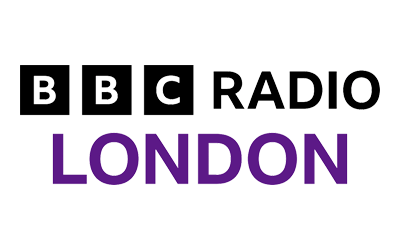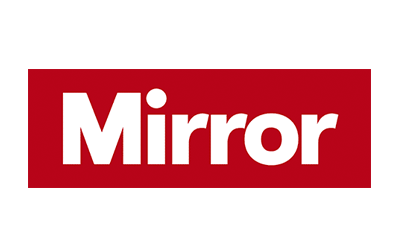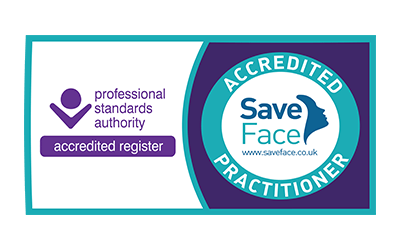
Breast Augmentation Mastopexy (Implants & Uplift)
At our world-class cosmetic surgery clinic in London

Experience
Surgeons with over 20 years experience

Close contact
Open communication at all times

Support
Your wellbeing is our priority

What is breast augmentation mastopexy?

What are the different types of breast augmentation-mastopexy?
The benefits of your breast augmentation mastopexy at Karidis Clinic
✔ Boost your self-confidence: get your ‘old self’ back
✔ Get a natural-looking result: an integral part of our ethos
✔ Enjoy exceptional care: five-star consultancy and aftercare
✔ Benefit from a bespoke service: we treat you as an individual
✔ Enjoy peace of mind: our skilled surgeons are highly experienced
✔ Combine treatments: we have a team of expert surgeons
Quick Reference

Duration
75 minutes

Driving
1 week

Anaesthesia used
General anaesthesia

Hospital Stay
Usually requires an overnight stay

Exercise
4-6 weeks

Final Result
6 - 9 months

Pre admission tests
Blood tests, MRSA, +/- ECG, +/- mammogram/ultrasound

Addresses
Breast size and shape

Downtime
Up to 6 weeks
What our clients say about us
Patient Stories
Charlotte
Breast Augmentation
“Really happy with my new breasts. Pregnancy and breastfeeding take a toll on your breasts and it doesn’t matter how much exercise or dieting you do, it’s not possible to reverse the changes that occur. I feel that my breasts are now in proportion with my body and beautifully lifted“

Our breast augmentation mastopexy surgeons
What to expect from your procedure
Some key information for what to expect in the lead up to, and during your procedure can be found below. We ensure our patients have all the support they need but if you do have further questions these will be addressed at your initial consultation.
The consultation
Before you undergo any cosmetic surgery procedure at Karidis Clinic, you will have a consultation and a pre-operative assessment with your plastic surgeon. They will listen carefully to your concerns and what you expect to achieve and discuss which procedure, or combination of procedures, is appropriate.
At this stage, they will also ensure you are fully aware of the potential risks and complications inherent in that specific procedure and explain to you what you can expect immediately after surgery, throughout the recovery process, and when you will likely see the final results.
During the pre-operative assessment, the surgeon may take measurements of the area to be operated on and assess your skin tissue quality and the degree of skin laxity. The position of the incisions will also be decided upon.
A full medical history will be taken to ensure you are fit and well and can undergo surgery at this time.
After the initial consultation, there will be a two-week ‘cooling-off’ period before you can decide to proceed with surgery. You are welcome to return for further consultations with your Karidis Clinic surgeon, free of charge, if you have more questions.
Leading up to the procedure
If you make the decision to proceed with surgery, you’ll be given advice on how best to prepare for your operation, and you will have a dedicated Patient Coordinator who can answer any queries you may have.
Any pre-surgery tests can occur at the Hospital of St John & St Elizabeth, a leading London private hospital where Karidis Clinic is based. The hospital has recently built a new wing including a diagnostic department with the latest X-ray, MRI, CT and ultrasound technology.
We advise patients to stop smoking as soon as possible as nicotine acts as a vasoconstrictor, which impedes the flow of oxygen-rich blood to the surgical site. This can slow down healing, increase the chance of infection and even cause tissue to die. Smoking also increases the risks of a general anaesthetic, and smokers are more likely to suffer ill effects from an anaesthetic.
You will also be advised when to discontinue taking aspirin or other blood-thinning medication in advance of your operation. You will be asked to fast six hours before surgery.
On the day
All Karidis Clinic procedures are performed at the Hospital of St John & St Elizabeth. When you arrive, you’ll be greeted and taken to your stylish and luxurious private room with its spacious ensuite bathroom.
The nursing team will take your blood pressure and relevant vitals, and you will see your Karidis Clinic surgeon, who will make the final mark-ups. Our anaesthetist will also visit you.
Clinical photography will be taken to assist in your care and to enable clinical assessments to be made. These become part of your confidential medical record. These include photographs of the operation site and any distinguishing features and will be taken pre-op and post-op.
Your procedure will be performed under a general anaesthetic, and once the surgeon has sutured the incision site, you will be taken to a specialist recovery room.
Treatment recovery
Once the hospital nursing team has ensured your recovery is complete, you will be taken to your hospital room for your overnight stay. The hospital nursing team will be on hand throughout the night, and you will be fitted with compression stockings and a compression device if required.
The following day, you will be visited by your Karidis Clinic surgeon or nurse and then discharged into the care of a friend or family member by the hospital nursing staff.
The pain and discomfort experienced after surgery are unique to the individual patient and the extent of their procedure. However, it should start to subside in the first week and should be easily managed with over-the-counter painkillers.
If necessary, you’ll be advised to wear a specially designed surgical support garment for approximately six weeks after surgery to support you during the healing process.
Depending on the nature of your job, you can usually expect to be able to return to work and normal activities between one to two weeks.
You’ll be given a comprehensive plan for the recovery process, including dates for your cast or suture removal and your check-ups with your Karidis Clinic surgeon. However, we are always on hand throughout this period, and you have access to our dedicated surgical nurse 24/7 if you have any concerns.
How much does breast augmentation mastopexy cost?
Breast Augmentation Mastopexy surgery requires a surgeon fee, an anaesthetist fee and a hospital fee. The price also includes all of your pre-operative and post-operative care. The cost may vary slightly depending on your unique requirements, but we will give you a detailed quotation following your consultation.
For more information on what our surgical fees cover, get in touch today.
FAQS FOR BREAST AUGMENTATION MASTOPEXY
What is an augmentation mastopexy?
An augmentation mastopexy is a combination of two cosmetic breast surgery procedures. A breast augmentation involves the insertion of breast implants into the breast to enhance the size and shape of the breasts. A mastopexy or breast uplift addresses sagging skin and breast tissue to lift the breasts to a more youthful position on the chest wall and produce a perkier appearance to the breasts.
Often, a standalone procedure will not adequately address concerns about your breast appearance. Implants can produce a slight lift to the breast and nipple, but if you have significant ptosis, the breast tissue will drop and fall over the implant, resulting in what is known as a ‘waterfall’ effect. Similarly, a mastopexy alone cannot address volume loss in the upper pole of the breast and implants are often required to improve projection and enhance your cleavage.
Who is a good candidate for a breast lift and augmentation?
You’re an ideal candidate for a breast lift and augmentation, if you’ve experienced sagging of the breast tissue and skin and a loss of breast volume at the same time and wish to improve the position, shape and size of your breasts. You should also be fit and well and have realistic expectations from surgery.
Is a mastopexy-augmentation part of a ‘mummy makeover’?
A mastopexy-augmentation is often performed as part of a mummy makeover which aims to address unwanted changes to the breasts and abdominal area post-pregnancy and breastfeeding.
What are the potential risks and complications of mastopexy-augmentation?
After any surgical procedure, there’s a chance of swelling and bruising. Less common issues are a reaction to a general anaesthetic, infection, fluid build-up, haematoma, changes in sensation, and poor scar healing. Potential risks associated with breast implants include extrusion of the implant, capsular contracture, and rupture. There’s also the chance of breast asymmetry, which is why choosing an experienced cosmetic surgeon is a must.
What can I expect after breast augmentation mastopexy?
You need to have someone to look after you in the initial post-surgery period, as you’ll feel some discomfort. Most patients return to work in a week to two weeks, depending on your occupation, as we advise you to avoid heavy lifting or strenuous activity in the first six weeks after surgery. Similarly, you may return to light exercise after four weeks — but prevent weight lifting or high-impact workouts for at least six weeks.
In terms of results, there’ll be some swelling, and it can take three months before this swelling fully subsides and for the breast implants to drop into their final position. Longevity varies from patient to patient, but if you maintain a stable weight, your results should be long-lasting.
ESSENTIAL INFORMATION FOR CONSIDERING PLASTIC SURGERY
Related surgeries and treatments we offer
Mr Alex Karidis performs cosmetic surgery aimed at rejuvenating the face, reshaping the body or enhancing the breasts. “I offer the full range of procedures because I have the breadth of training required. Having performed over 20,000 procedures over the last 25 years, our patients get the absolute maximum in terms of expertise.

Breast uplift surgery
Mastopexy, also known as a ‘breast uplift’, is a surgical procedure to reshape and raise breasts without altering the overall volume of the breast.

Breast reduction surgery
Breast reduction, also referred to as reduction mammoplasty, is the surgical correction to reduce the size, volume, shape and weight of the breasts.

Corrective breast revision
Corrective and revision breast surgery is becoming increasingly popular to correct uneven or asymmetrical breasts or past surgery issues.
Related posts and expert insights
Here at the Karidis clinic, our blog is updated regularly to provide you with the most recent trends and insights in the industry. Stay informed by reading our blog articles related to Breast Augmentation Mastopexy Surgery.





















